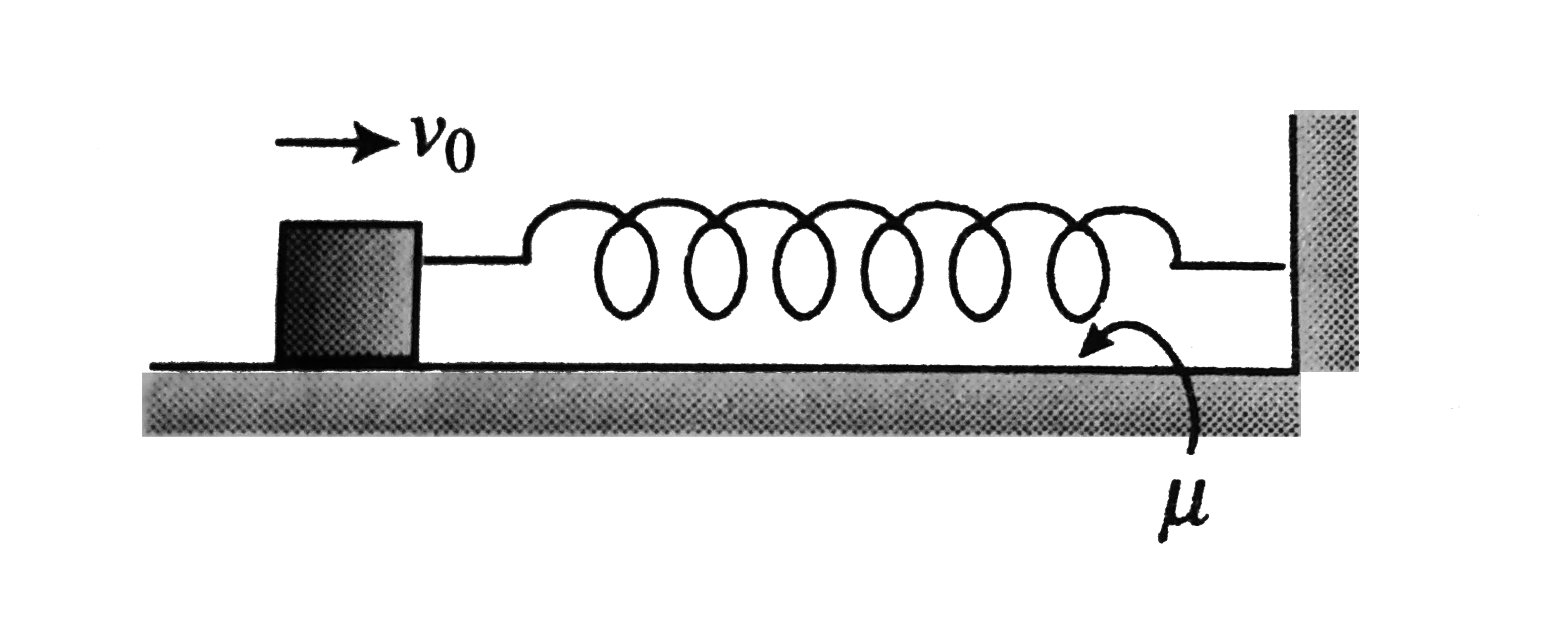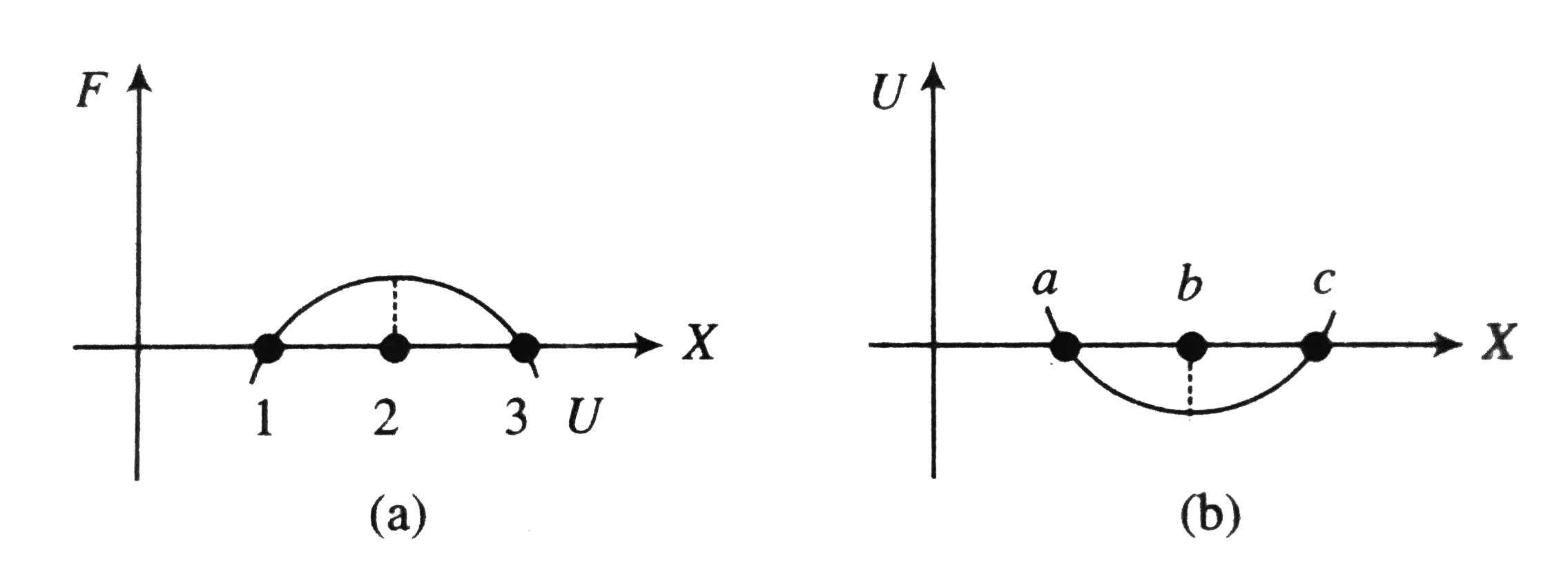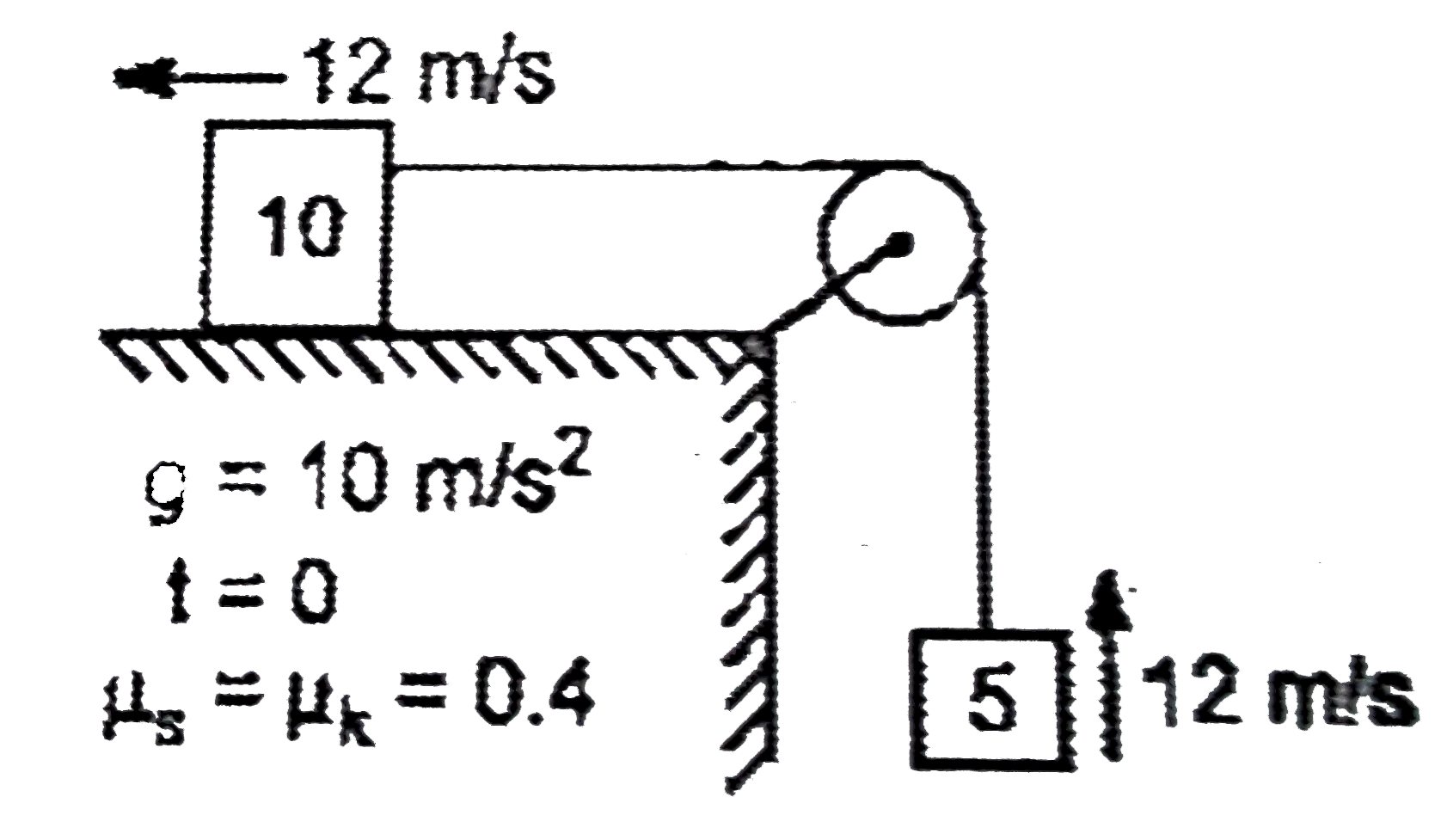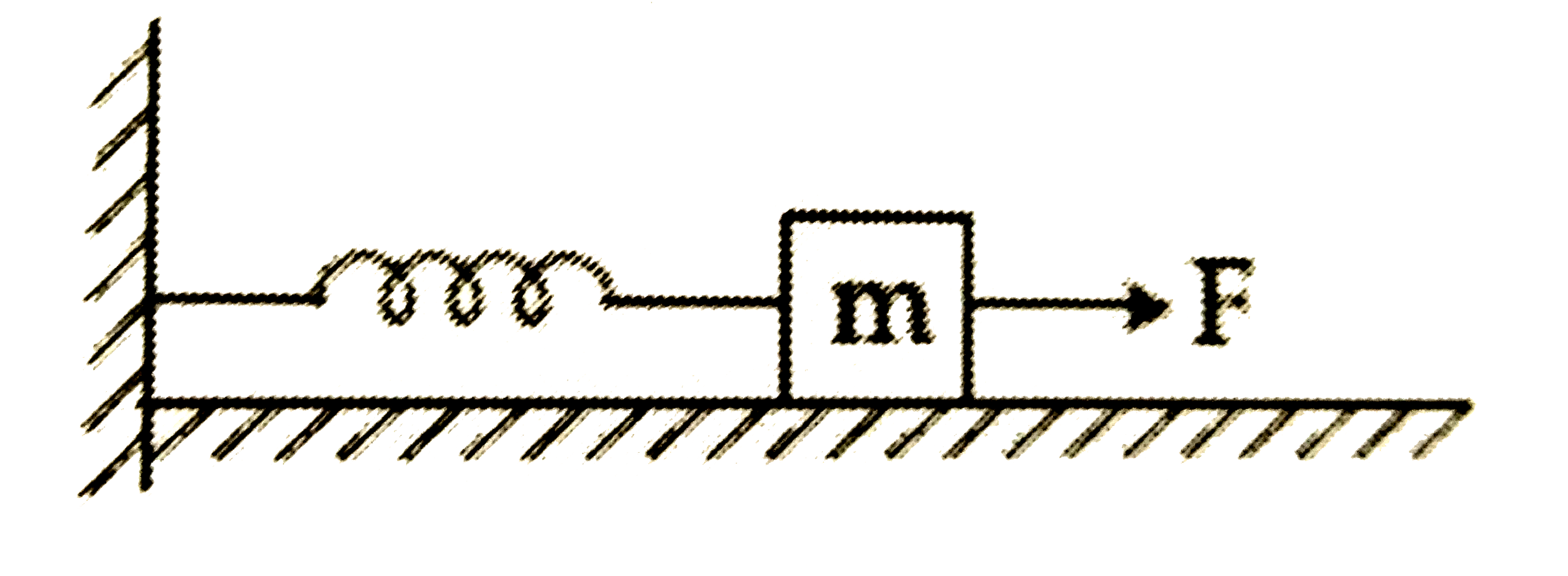In the position shown in figure, the spring is at its natural length. The block of mass is given a velocity towards the vertical support at . The coefficient of friction between the block and the surface is given by , where is a positive constant and x is the position of the block from its starting position. The block comes to rest for the first time at x, which is

(a)
(b)
(c)
(d) None of these
The correct Answer is:A
According to the work-energy theorem,
Solving we get,
Topper's Solved these Questions
- BOOK - CENGAGE PHYSICSCHAPTER - WORK, POWER & ENERGYEXERCISE - Multiple Correct25videos
WORK, POWER & ENERGY
- BOOK - CENGAGE PHYSICSCHAPTER - WORK, POWER & ENERGYEXERCISE - Linked Comprehension55videos
WORK, POWER & ENERGY
- BOOK - CENGAGE PHYSICSCHAPTER - WORK, POWER & ENERGYEXERCISE - Subjective23videos
WORK, POWER & ENERGY
- BOOK - CENGAGE PHYSICSCHAPTER - VECTORSEXERCISE - Exercise Multiple Correct5videos
VECTORS
Similar Questions
Referring the graphs, which of the following is/are correc?
 13:32View Solution
13:32View SolutionTwo unequal masses are ties together with a cord with a compressed spring in between.
When the cord is burnt with a match releasing the spring, the two masses fly apart with equal13:32View SolutionIn figure, the pulley shown is smooth. The spring and the string are light. Block B slides down from the top along the fixed rough wedge of inclination θ. Assuming that the block reaches the end of the wedge, find the speed of the block at the end. Take the coefficient of friction between the block and the wedge to be μ and that the spring was relaxed when the block was released from the top of the wedge.
 07:16View Solution
07:16View SolutionWhich of the following statements is/ are correct(Figure)
 11:05View Solution
11:05View SolutionA 100 g block is connected to a horizontal massless spring of force constant 25.6(N)/(m) As shown in Fig. the block is free to oscillate on a horizontal frictionless surface. The block is displaced 3 cm from the equilibrium position and , at t=0 , it is released from rest at x=0 It executes simple harmonic motion with the postive x-direction indecated in Fig. The position time (x-t) graph of motion of the block is as shown in Fig. Q. When the block is at position B on the graph its.
View SolutionA 100 g block is connected to a horizontal massless spring of force constant 25.6(N)/(m) As shown in Fig. the block is free to oscillate on a horizontal frictionless surface. The block is displaced 3 cm from the equilibrium position and , at t=0 , it is released from rest at x=0 It executes simple harmonic motion with the postive x-direction indecated in Fig. The position time (x-t) graph of motion of the block is as shown in Fig. When the block is at position C on the graph, its
View SolutionA block of mass 2 kg is connected with a spring of natural length 40 cm of force constant K=200 N//m . The cofficient of friction is mu=0.5 . When released from the given position, acceleration of block will be
02:16View SolutionBlocks are given velocities as shown at t=0, find velocity and position of 10 kg block at t=1 and t=4.
 View Solution
View SolutionIn the system as shown in figure, the blocks have masses m_(1) and m_(2) , the spring constant is k, coefficient of friction between the block of mass m_(1) and the surface is mu . The system is released with zero initial speed from the position where the spring is in its natural length.
07:30View SolutionA block of mass m, lying on a smooth horizontal surface, is attached to a spring (of negligible mass) of spring constant k. The other end of the spring is fixed, as shown in the figure. The block is initally at rest in its equilibrium position. If now the block is pulled withe a constant force F, the maximum speed of the block is :
 03:33View Solution
03:33View SolutionA block of mass m, lying on a smooth horizontal surface, is attached to a spring (of negligible mass) of spring constant k. The other end of the spring is fixed, as shown in the figure. The block is initally at rest in its equilibrium position. If now the block is pulled withe a constant force F, the maximum speed of the block is :
04:35View Solutionचित्र में दिखाई गई स्थिति में M द्रव्यमान के ब्लॉक का त्वरण ज्ञात कीजिए| दोनों ब्लॉकों के बीच घर्षण गुणांक का मान μ तथा बड़े ब्लॉक एवं जमीन के बीच घर्षण गुणांक μ2 है|
 03:45View Solution
03:45View SolutionAn oscillator consists of a block attached to a spring of spring constant K=300 N/m. At some time t the position (measured from its equilibrium position), velocity and acceleration of the block are
x=0.1m,v=−15m/s and a=−90m/s2. What is the ampliof motion and the mass of the block ?03:32View SolutionTime varying force horizontal F=K_(0)t is applied on a block of mass placed at rest on a rough horizontal surface ( mu is coefficient of friction).At a time t=(3 mu mg)/(K_(0)) the acceleration of the block is given by a =p mu g where p=...........( K_(0) is a positive constant)
04:32View SolutionA block of mass 1kg is at rest on a horizontal surface at x=0.A force of 6N is applied on block toward positive x -axis.Coefficient of friction between block and surface is variable and depends on the its distance x from origin as mu=((2-x)/(10)) . If v is speed of block at x=2. Find (v^(2))/(1000) .
02:42View Solution

